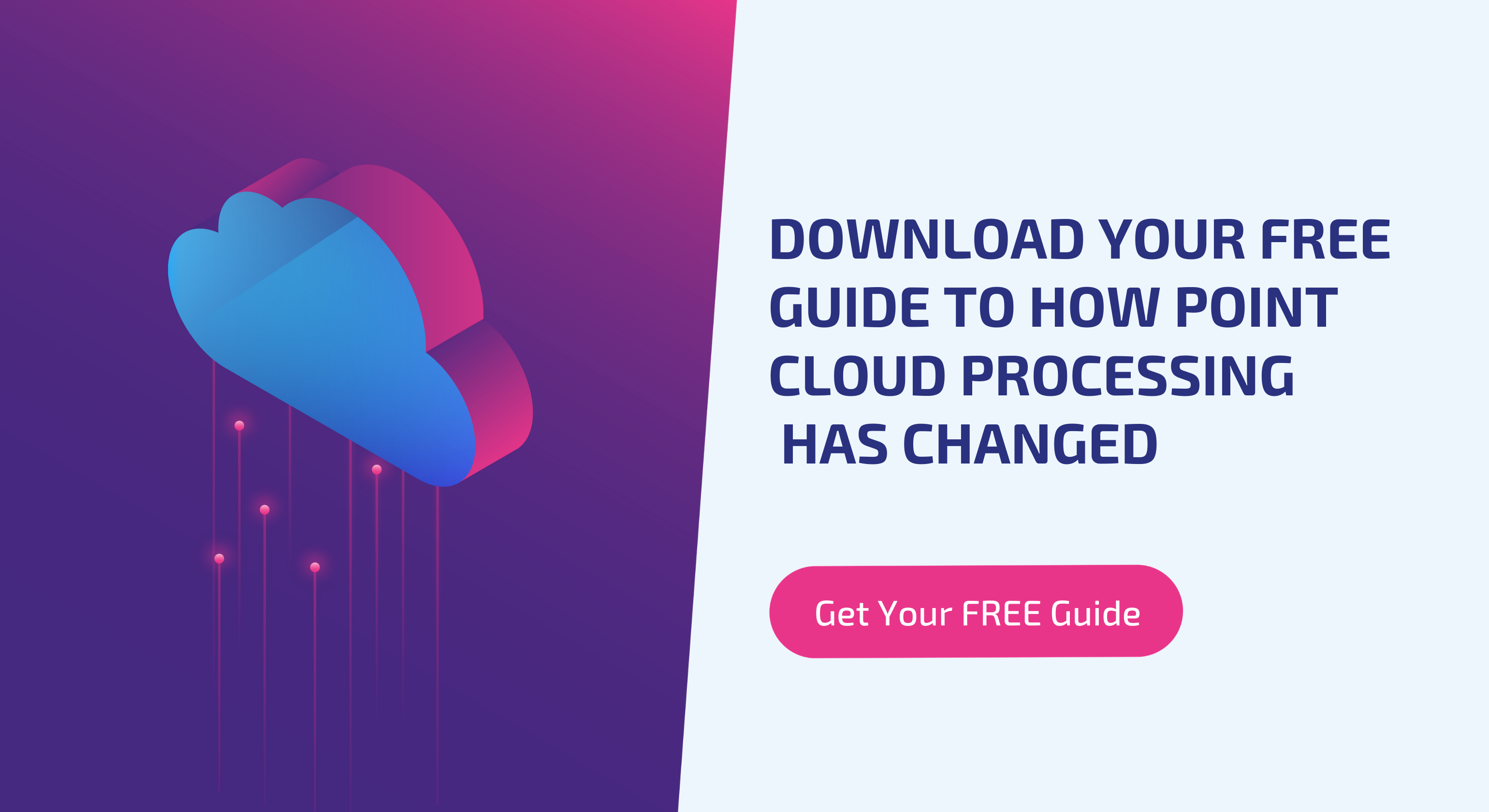How to use point clouds in your construction projects

The construction industry is undergoing a digital transformation. Traditional tools and processes are being replaced with digital ways of working. Underpinned by new technologies and processes operating methods are being transformed. This enables everyone to do things faster, easier and more accurately.
Laser scanning is a critical tool bringing construction into the 21st century. Laser scanning is used to record field data and capture the shape and appearance of a site. Coordinated points form the basis of an accurate 3D model. But point clouds open up many possibilities beyond recording and modelling — the question is how can you best integrate them into your construction projects?
Make sure you are using the best point cloud processing software
Up until now, a major barrier to getting the most out of point clouds was dealing with the inefficiency of registering 3D point cloud surveys. Registration software either depends on artificial targets or uses natural features within the scene to align scans. In both cases, traditional software struggled to accurately deliver results without significant manual oversight. The faster and more accurately you can identify, align and stitch together these multiple scans, the easier it is for you to make use of them.
The introduction of new, multi-stage processing software that uses vector-analysis is changing the 3D surveying industry; this software accelerates processing times and automates laborious tasks. Vector analysis, rather than simple point comparison, allows for a more accurate scan pairing and faster methods of analysis.
Using complex algorithms and machine learning, vectors in overlapping scans are matched and brought into alignment. Firstly, a rotational alignment is performed, then a translational alignment in the horizontal plane, followed by a translational alignment in the vertical plane.
By making use of software rather than manual intervention, you achieve state-of-the-art measurement accuracy and significantly improve cost and process efficiencies. This means less time staging a scan and less time extrapolating the data, yet still yielding reliable and accurate results.
Understand the information value of point clouds
To fully utilise point clouds in your construction projects, you need to first use point clouds as an information source to avoid project delays. By delivering site information regularly to one central resource, and relying on this one “source of truth”, you will improve team communication and reduce risk and delays.
Exploiting cloud storage is a quick and reliable way to get a complete and accurate centralised data set at the beginning of your project. For example, you can create initial digital plans with information about scheduling, estimating and real-time field data. Having this at the start of a project enables accurate planning and forecasting, reducing errors and risks.
Throughout the entire lifecycle of the project, you can continually update your scans to reflect the building’s actual progress; the right information is provided to the right people at the right time.
Integrate point clouds into your BIM strategy
Point clouds should form the foundations of your BIM schematic, using them to build exact datasets, bring real-world assets into the digital space and unlock a wealth of new possibilities at every stage of the project.
By having a central data hub of accurate and up-to-date information on the desired outcome, as well as the current status of the project, you will see fewer inconsistencies in what everyone involved in the project is working towards. The result is a reduction in design flaws, better budgeting and fewer problems with the later stages of the project for operations and maintenance integration.
Point clouds to increase quality assurance
Creating a digital archive of multiple point cloud scans shows where you started and provides a snapshot of how the project progressed to completion.
Taking laser scans at the beginning of a project to document the conditions that existed prior to your involvement. If there is any dispute, you simply refer to the record. Of course, as part of this process, it is worth ensuring you have a clear file and folder naming structure. If structured correctly, you will be able to identify any contractors involved and avoid complications with clients. From a risk standpoint, you can prove what occurred in case of misunderstandings or malicious incidents.
You can ensure even better visibility by taking additional scans throughout a project to compare progress to planning. This is where the use of more advanced registration software starts to pay off.
By making the most of vector-based registration software and processing in the cloud, you can reduce the time taken to register 130 scans from around 10 hours using traditional methods to 1 hour. Point clouds deliver project managers certainty, and advances in point cloud processing deliver accessibility.
Point clouds connect digital space with physical space
New multi-stage, vector-based, point cloud processing software has made the use of targetless registration processes a viable option. We see greatly reduced costs of commissioning a point cloud survey while providing excellent, accurate results.
As the costs to commission point cloud surveys for any given project decrease, we will naturally see a rise in the procurement of these types of surveys. Reduced costs delivered by these improvements to software are also increasing the number of applications of what can and what is being scanned.
This is all due to breakthroughs in cloud registration technology.
Digital construction has the potential to deliver huge benefits for everyone involved in the industry. By adopting the processes and approaches outlined, construction businesses can start to become ‘digital natives’.
Tags: point clouds


